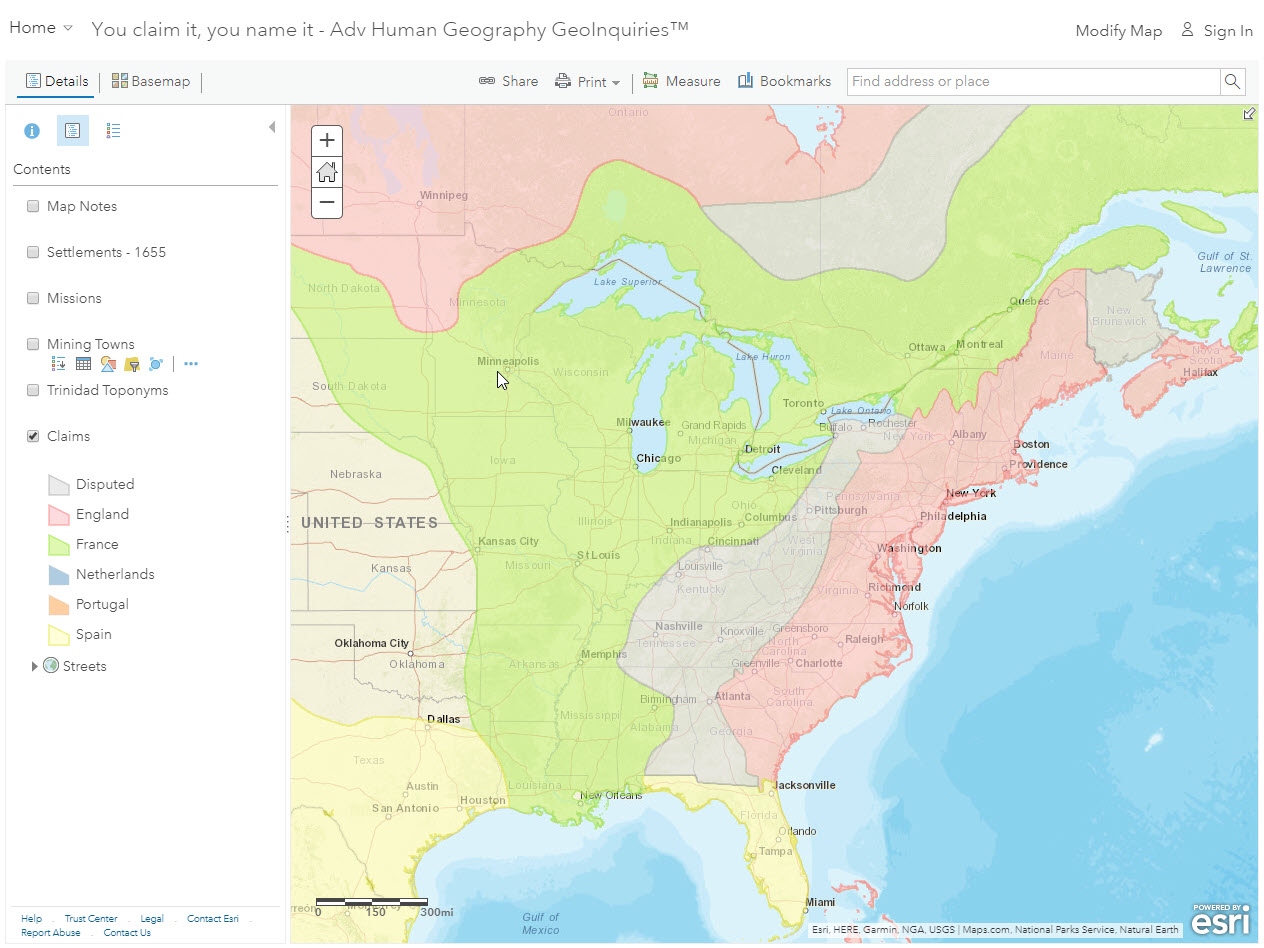You Claim It; You Name It Ask: What is a toponym?

Step 1: Go to the ArcGIS Online map, You Claim It, You Name It, and explore the map.
Step 2: Open and read the map note located inside North America (in North Dakota).
- Whom was North America named after?
Step 3: Open and read the map note located off the west coast of North America.
- What is the language of origin?
Acquire: What is the toponymy of the East Coast?
Step 4: Click the button, Bookmarks. Select the Eastern Canada bookmark.
- Which languages were used for place names?
Language, another cultural trait, also influenced these place names.
Step 5: Click the button, Bookmarks. Select East Coast.
Step 6: With the Details button underlined, click the button, Show Contents of Map (Content).
Step 7: Click the checkbox to the left of the layer name, Settlements – 1655.
Step 8: To display a legend, click on the layer name, Settlements – 1655.
- Where were the French settlements concentrated?
- Where were the English settlements?
What major migrations helped define California toponyms
Step 9: Click the button, Bookmarks. Select California-Local.
- Which languages were used for place names?
Step 10: Turn on the layer, Missions.
- Why did the Spanish build missions in California?
- What spatial patterns do you notice?
Step 11: Click the button, Bookmarks. Select California-Regional.
Step 12: Turn on the layer, Mining Towns.
- How were missions and mining settlements distributed?
How does Trinidad’s toponymy compare to Canada and California?
Step 13: Click the button, Bookmarks. Select the West Indies bookmark.
Step 14: Open and read the map note near Cuba.
The reason why the area is called the West Indies is that Christopher Columbus thought he was in Asia.
Step 15: Click the button, Bookmarks. Select the Trinidad bookmark.
Step 16: Turn on the layer, Trinidad Toponyms. Click the layer name to display its legend.
- What were the dominant languages used for Trinidad’s place names?
What is the relationship between colonization and toponyms?
Step 17: Click the button, Bookmarks. Select the European Claims bookmark.
Step 18: Turn on the layer, Claims. Click the layer name to display the legend.
- How are regional place names in the Americas tied to colonization?
- Besides toponyms, colonization and these early claims affect religion, language, architecture, and more. True/False
